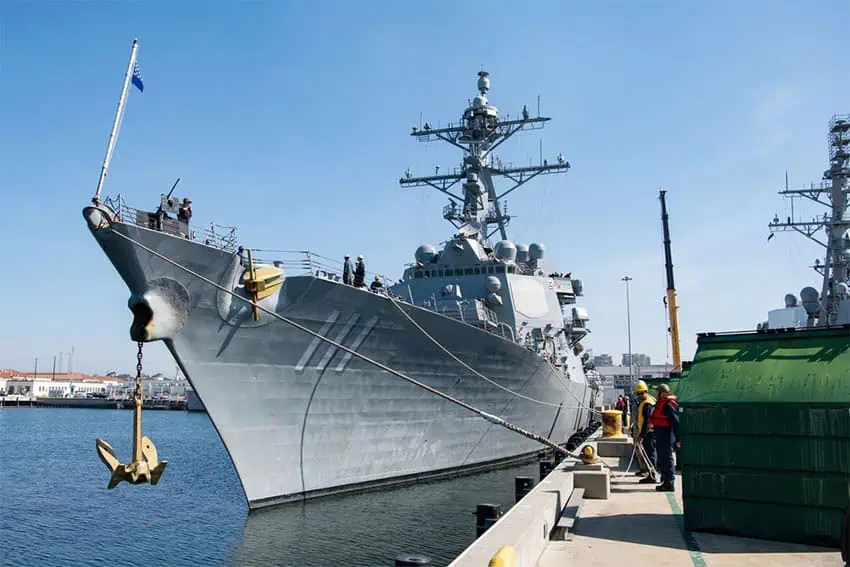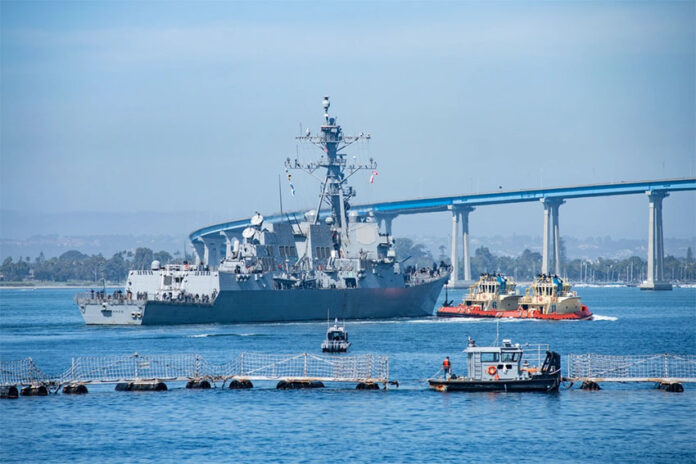The U.S. government has deployed another warship to waters near Mexico as part of President Donald Trump’s call to secure its southern border.
The USS Spruance is the second Navy destroyer that served in the Red Sea to be ordered to support the U.S. Northern Command’s mission.
Spruance departed U.S. Naval Base San Diego on Saturday, just days after the USS Gravely deployed to the Gulf of Mexico as part of the U.S. military’s response to Trump’s executive order declaring a national emergency at the border.
Gen. Gregory Guillot, the commander of U.S. Northern Command, said the deployment will focus on combating maritime-related terrorism, weapons proliferation, transnational crime, piracy, environmental destruction and illegal seaborne immigration.
“With Spruance off the West Coast and USS Gravely in the Gulf of America, our maritime presence contributes to the all-domain, coordinated DOD response to the Presidential Executive Order and demonstrates our resolve to achieve operational control of the border,” he said.
Spruance will patrol in U.S. and international waters near the Mexico-U.S. border from its homeport of Naval Station San Diego. Just like Gravely which is based at Mayport, Florida, Spruance will also include a U.S. Coast Guard law enforcement detachment (LEDET) to assist with maritime interdiction missions.

The deployment of two Arleigh Burke-class guided-missile destroyers represents “an unprecedented concentration of naval assets for border security operations,” Newsweek reported.
The Arleigh Burke-class are U.S. warships known as multi-mission surface combatants, capable of engaging targets on, above and below the surface. They can operate independently or as part of carrier strike groups, surface action groups, amphibious ready groups and replenishment groups.
Spruance returned to its homeport just before Christmas after serving five months with the Abraham Lincoln Carrier Strike Group, during which time it operated in the Red Sea.
Gravely also operated in the Red Sea last year. Both warships were deployed to counter attacks by Houthi rebels based in Yemen on both commercial shipping and U.S. warships operating in the region.
The maritime-based strategy is in response to the expectation that criminal organizations adapt to heightened border security measures on land. Detecting and interdicting illicit drug traffickers on the high seas involves significant inter-agency and international coordination, the U.S. Coast Guard says.
The idea is to make sure that maritime routes are not seen as more attractive alternatives for smugglers who are increasingly utilizing sophisticated vessels, including remote-operated submersibles, to smuggle drugs into the U.S.
Previous joint operations involving the U.S. Navy and Coast Guard have yielded significant results, Newsweek reported. Last year, the collaboration efforts prevented nearly 15 tons of cocaine from entering the U.S.
With reports from Newsweek, Infobae, Latin Times, United States Coast Guard News and USNI News
